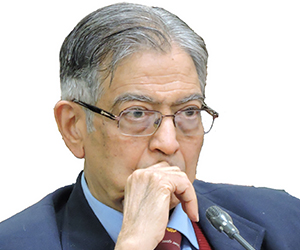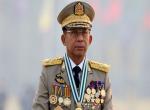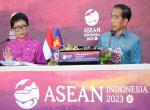Amidst the doom and gloom generated by an Indian foreign policy, which has for the last several years been marked by lack of vision and by pusillanimity in dealings with USA, Pakistan and China, there are two areas in which there are grounds for cheer notably in our relations with Bangladesh and Myanmar.
In both cases India has, in the last six months, handled visits of the Head of Government/ Head of State with vision and finesse which has had the potential of being a game changing endeavour. If, in the case of Bangladesh, India fully reciprocated Sheikh Hasina’s sensitivity to its concerns on terrorism with a generous assistance programme coupled with understanding on emotive issues like water sharing etc, in the case of Myanmar it did not let Western pressure force it to deviate from its well founded policy of establishing a meaningful relationship with that country. Accordingly, both during Sheikh Hasina’s visit to India in January 2010 and Senior General Than Shwe’s visit to India from July 25-29, 2010 meaty joint communique’s/ statements were issued running into 50 and 45 paragraphs respectively laying down the framework for multifaceted cooperation the faithful implementation of which will make for much closer India -Bangladesh and India-Myanmar ties.
That Government stayed the course in making Senior General Than Shwe’s state visit a success, despite protests against it by the substantial Myanmar refugee community in India and calls on India by international human rights organizations as well as the USA to pressurize Myanmar to promote genuine democratic reform, is commendable. Government appears to have wisely refrained from being preachy on this account and to have focused single mindedly on fostering a closer cooperative relationship with Myanmar even though its military regime is unlikely to relinquish its hold on power any time soon and whose moves towards democratic reform are no more than a charade.
This is in line with the policy shift initiated by India in the early 90’s when its hands off approach vis a vis the military regime, influenced by its support for the democratic forces represented by Aung San Suu Kyi, was abandoned for the much more pragmatic approach of engaging and doing business with the prevailing dispensation. This change in policy was dictated by a variety of factors notably that a friendly Myanmar would be useful in helping India address some of the insurgencies in the North East and in acting as a land bridge to South East Asia. The pivotal role that Myanmar can play in this regard arises from the fact that the two share a 1640 Km long border and its cooperation is critical to our dealing successfully with local insurgencies which have often also had a measure of cross border support in the past. The gradual rapprochement between the two countries over the years was also facilitated by a mutuality of interests not only in terms of the enormous potential of economic, commercial, and connectivity spin offs but also by the recognition that improved bilateral ties could act as a balancer, however small, to China’s overwhelming presence and influence in Myanmar. For Myanmar the compulsion for better ties with India is also based on the recognition that such links will help it in better coping with the international isolation sought to be imposed on it by the west.
Than Shwe’s recent state visit to India was part of series of high level exchanges over the last several years. Following his own first state visit to India in 2004, General Maung Aye, Vice Chairman of the State Peace and Development Council visited India in 2008 and our Vice President Shri Hamid Ansari visited Myanmar in 2009.
India wisely rolled out the red carpet for Than Shwe’s visit. He was accorded a ceremonial reception at Rashtrapati Bhawan and a banquet in his honour was hosted by the President. He had a meeting with PM following which delegation level talks were held between the two sides. Whilst in India he visited several places of Buddhist interest notably Bodh Gaya and Sarnath, L&T infocity in Hyderabad and the Tata Motors plant in Jamshedpur in the context of the fact that Tata Motors are establishing a plant at Magway in Myanmar which will be manufacturing 1000 heavy trucks annually from 2011.
The joint statement issued and the agreements signed during the visit indicate that India-Myanmar relations have become all encompassing and are rich in diversity. Cooperation possibilities are being explored or developed in areas ranging from energy to mining, from connectivity to trade, and from human resource development to culture.
From India’s standpoint two issues are particularly significant. First, the agreement on the need for “close cooperation between the security forces of the two countries” to address terror and that the territory of either country would not be allowed for activities inimical to the other. Second, the reiteration of Myanmar’s support for India’s candidature for a permanent seat to the UN Security Council. This acquires great importance as many Indian friends like the US have stopped short of this and as China which has so much influence on Myanmar is opposed to this.
India on its part agreed to :
1.Consider Myanmar’s request for assistance in information technology, industrial and infrastructure development;
2.Provide a $60 million grant for construction and revamping of the Rhi-Tiddim road;
3.Provide a $10 million grant for purchase of agricultural equipment.
4.Provide credit lines of $60million, $64 million and $6 million for purchase of railway equipment, development of transmission lines through PGCIL and upgrading of microwave link from Moreh to Mandalay respectively.
5.Cooperate on the Tamanthi and Shwezaye power projects on the Chindwin river basin.
6.Substantial additional investment by ONGC and GAIL for development in upstream and downstream projects of Myanmar’s offshore blocks A-1 and A-3 including the natural gas pipeline under construction at Ramree.
- The following agreements were signed during the visit:
- Treaty on Mutual Assistance in Criminal Matters
- Memorandum of Understanding regarding Indian Grant Assistance for Implementation of Small Development Projects
- Agreement on Cooperation in the fields of Science and Technology
- Memorandum of understanding on Information Cooperation
- Memorandum of understanding for the Conservation and Restoration of the Ananda Temple in Bagan.
Quite clearly Than Shwe’s visit to India has been useful in further consolidating ties between the two countries. If we continue to nurture this relationship in a similarly workmanlike fashion uninfluenced by third parties India-Myanmar ties are bound to attain newer heights which will redound to the benefit of both countries. The only regret is that our media failed to give sufficient coverage to this visit and highlight its significance. This was to some extent also the case with Sheikh Hasina’s visit. It is time our media pay due attention to relations with neighbours like Myanmar and Bangladesh and not remain fixated on relations with China, Pakistan and the USA.









Post new comment